As we all know, many brains is better than one when it comes to solving problems…. so I need your help 🙂
Along with the broken pot, I bought another one that turned out has a bit of a crack on the outside (didn’t see it because, well, it was covered in dirt). That’s not the real issue though.
Looks nice enough
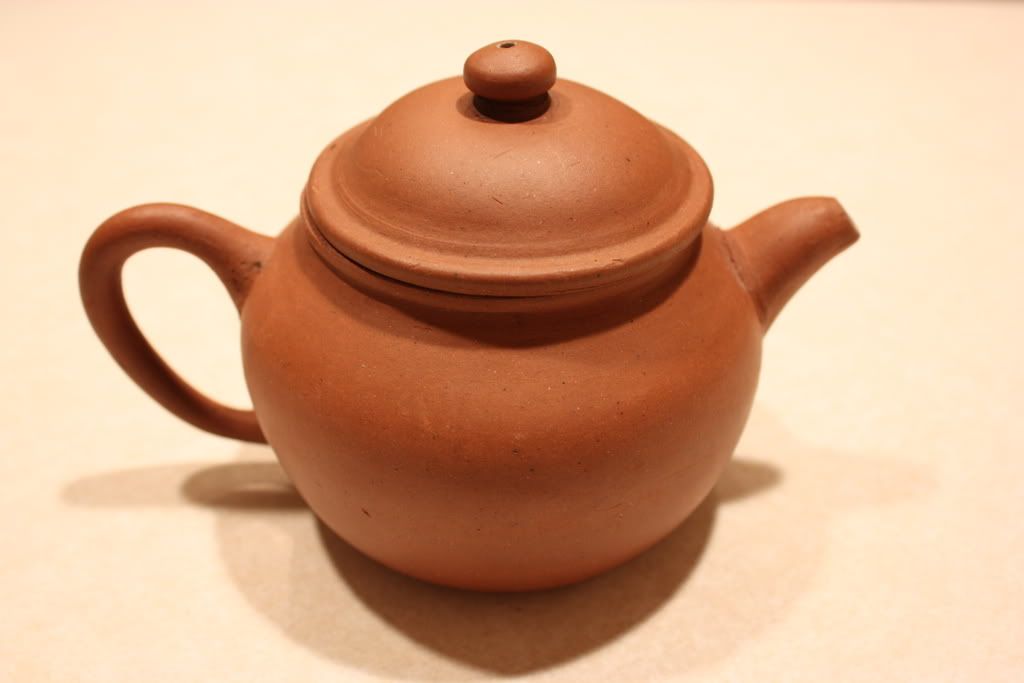
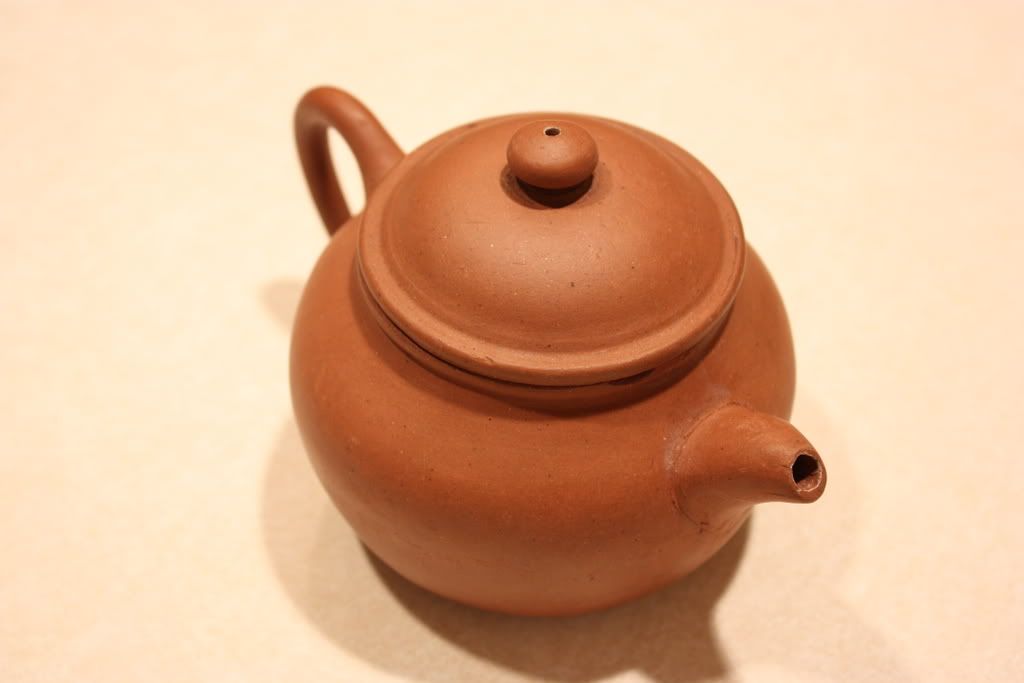
Until you see the inside
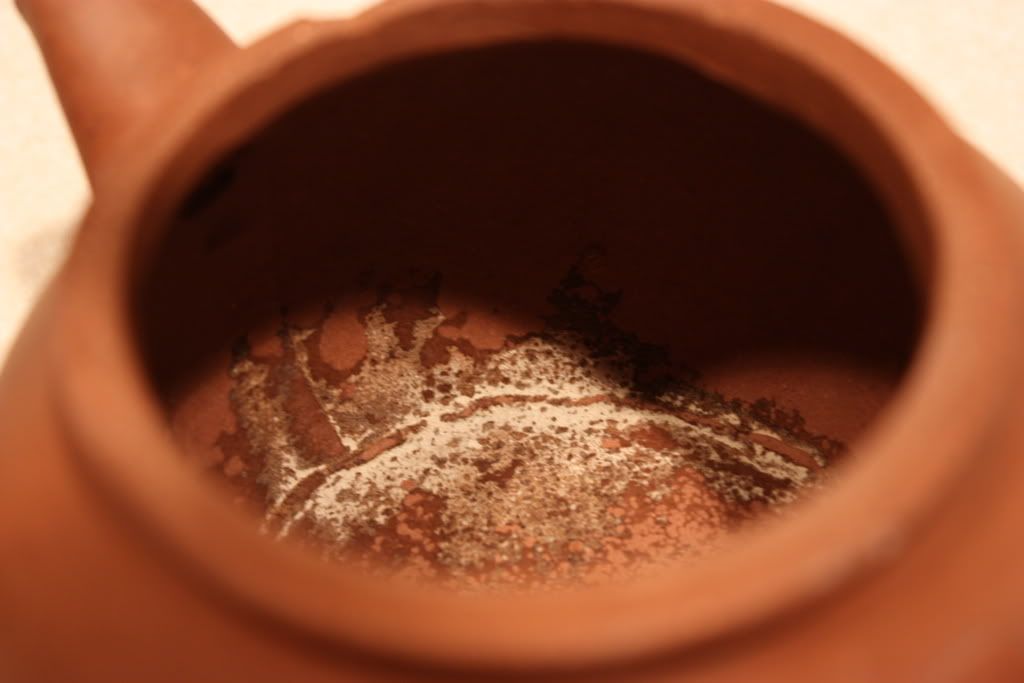
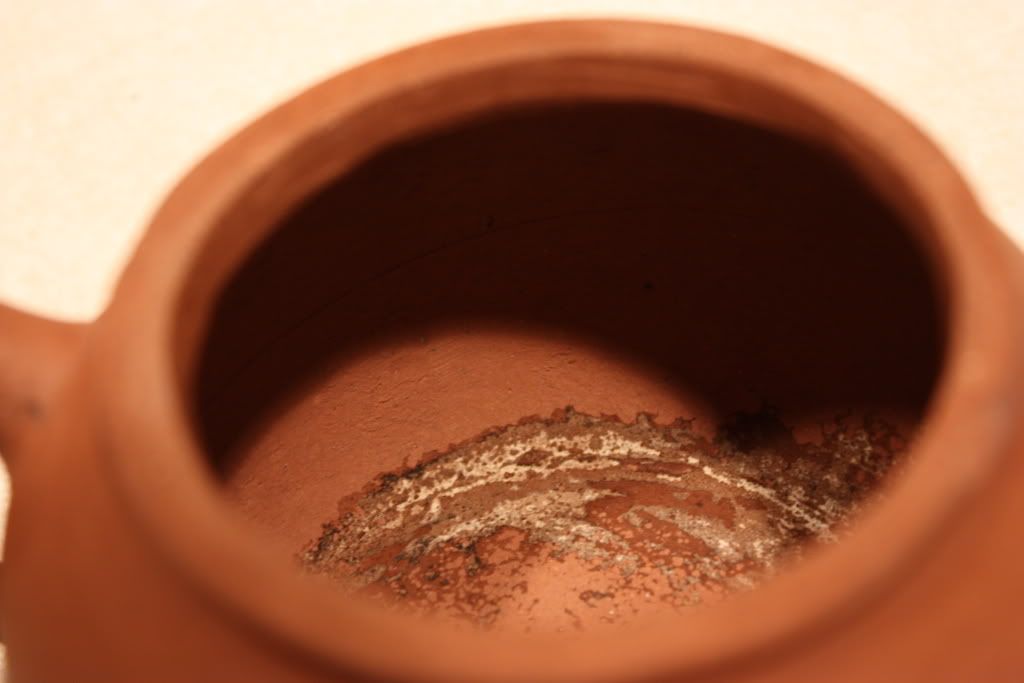
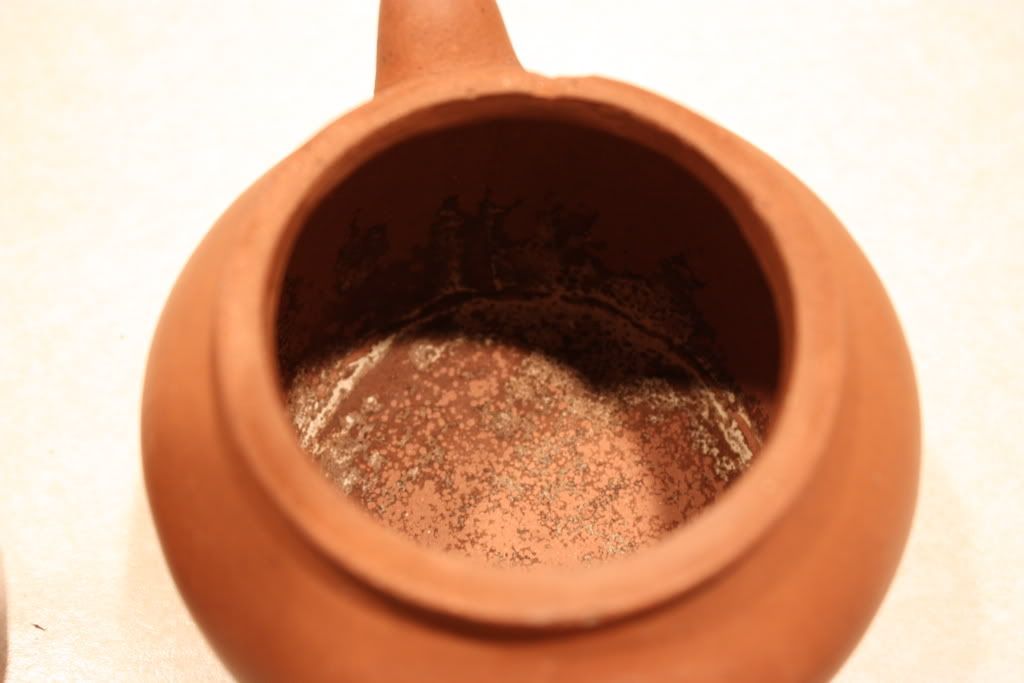
And this is AFTER cleaning it with BLEACH. You don’t want to know what it looked like before — imagine a white covered interior that feels like it is caked on for ages. I have no idea what it is, or how it is so stubborn. I’ve already removed most of it, although you can see how it still has that brown base that makes the whole bottom sort of spotty looking.
How do I clean this thing?
I’ve heard you can use citric acid to melt things away like this, but I’ve never tried it. Aside from that…. what else can I do? I mean, I’m not sure if this pot is really that usable, since it is cracked (although it does not leak — cracking is only on the outside, strangely enough). Either way though, I’d like to at least have it be clean….

 RSS - Posts
RSS - Posts
15 responses so far ↓
Anonymous // July 17, 2008 at 8:00 am |
Have you tried baking powder? It works wonders on tea stains on ceramic teaware but I haven’t tried it on Yixing pots…
TuoChaTea // July 17, 2008 at 8:28 am |
The crack on the outside could be dangerous – after pouring hot water into the pot the clay expands. The inner side i warmer than the outer side, so it expands more/faster. And if the outer side is cracked, the teapot could break.
Wesli // July 17, 2008 at 2:26 pm |
If you don’t want to use citric acid (my first recommendation), you can pick up denture tabs from the store. Make sure the tabs are unflavored, then either throw one in your yixing, or put your yixing in a bowl of water and throw the denture tab in (or whatever the directions say). I haven’t tried this myself, but I’ve heard good things (except from the guy who used a flavored tab).
Best of luck
djn7304 // July 17, 2008 at 3:17 pm |
Ouch, that’s gonna be tough to completely get rid of. Anything growing on a porous material like yixing clay would be able to get deep down into the pot. Even if it’s just calcification from hard water that could be just as insidious. The only thing I can think of is repeated soakings in baths targeted at each problem and see which cleans it better. Just like cleaning porous artifacts retrieved from the ocean, sometimes only time and elbow grease (with liberal doses of cleaning agents) will restore them to their original condition.
betta081 // July 17, 2008 at 4:24 pm |
MarshalN, the pot seems to be a shipwreck. Am I right?
If so, then the white spots at the bottom of the pot are minerals which were built over years through mineralisation. It’s unfortunately irreversible reaction.
Bleach, including denture tablets only removes organics, it won’t work for this. Acid is abrasive so it can peel the pot, so it will work, but a high dosage might spoil the pot.
If the hot citric acid still can’t remove the stain, only hydrochloric acid can do it partially.
Basically if it’s shipwreck, the mineral down there shouldn’t be harmful.
Betta
sherabch // July 17, 2008 at 9:38 pm |
I have no idea about how to clean it, but I really admire your BRAVENESS! Such thing will certainly scare me far away… but not so if I didn’t take a look inside of it! How come its ouside so smooth and clean? This makes me not agree with Betta for the possibility of a shipwreck. I’ve seen some shipwreck items and they had mineral deposit right on the outside surface. MarshlN, I strongly suggest use it to grow herbs! Try basil….
Anonymous // July 17, 2008 at 11:29 pm |
I’ve never encountered such a challenging piece of yixing, so I can’t attest as to the efficacy of this method first hand, but TEAfiles offers a pretty detailed cleaning tutorial. It starts with , where you can see the extent of the dirt situation, and concludes with this post</a > which details the method. Apparently the secret is in Steradent tablets, a good stiff brush, and lots of patience for long soaks.
Anonymous // July 17, 2008 at 11:31 pm |
Oh for goodness sakes…Xanga is ridiculous. Here’s the full links:
1) http://teafiles.blogspot.com/2006/04/redeeming-teapot.html
2) http://teafiles.blogspot.com/2006/06/ok-here-are-details.html
MarshalN // July 18, 2008 at 12:02 am |
Yeah, I don’t think this is a shipwreck piece either. As Sherab said — it should be nasty throughout, not just in the pot near the bottom. It’s not nasty throughout — it was dirty, but not stuck with weird stuff.
I might have to give citric acid a try. The guy I bought pots from in Taiwan said he uses citric acid…
Xanga is, indeed, somewhat ridiculous.
betta081 // July 18, 2008 at 1:21 am |
@MarshalN –
If you take a look at this site:
http://www.mingwrecks.com/sales/yixing.html
The outher surface is clean but it’s clearly from my eyes that the pots have been through years of weak abrasion.
Yours looks also more or less the same. The mineralisation will start first on a surface where the mineral doesn’t move intensely. It would mean, the bottom of the pot. It’s just the same like if you have sugar dissolved in water in a glass. After some time, without stirring, the sugar slowly forms a layer of viscous liquid only at the bottom of the glass.
It causes mineralisation in case of brine.
Betta
MarshalN // July 18, 2008 at 1:38 am |
You have a point there, but…. I don’t know why I would be getting a shipwrecked piece….
Although, that’s hardly a problem at all. I’m rather curious if it were.
I know those shipwreck guys take a long time cleaning those pots…
Phyllo // July 18, 2008 at 7:32 pm |
Ultrasound?
Anonymous // July 18, 2008 at 8:59 pm |
You might want to check the pH of the residue before committing to either citric acid or denture tablets. I know that spent tea leaves and newish tea stains are on the slight acidic end…I think older ones might be, too. If that’s the case, I think the denture tablets actually have mostly basic ingredients in them and might be more effective.
But all that is just wild speculation on my part.
MarshalN // July 18, 2008 at 11:48 pm |
Hmmm, ultrasound…. if I can find a jeweler who’ll let me use theirs…. maybe?
betta081 // July 19, 2008 at 2:07 am |
@MarshalN –
I have one ultrasonic cleaner. It’s not working as effective as chemical method but it sometimes can remove these stains.
I used to use it to remove all of the denture tabs, bleach, carbonate residue from my cooked old pot using ultrasonic cleaner.
I would say give a try but look for the one for real commercial use. BTW even it’s water you’re using as medium, don’t dip your finger into it. Some researches show the medium being treated to ultrasonic treatment becomes radical. The treated pot can be rinsed. Please let us know how’s the result =))
Betta